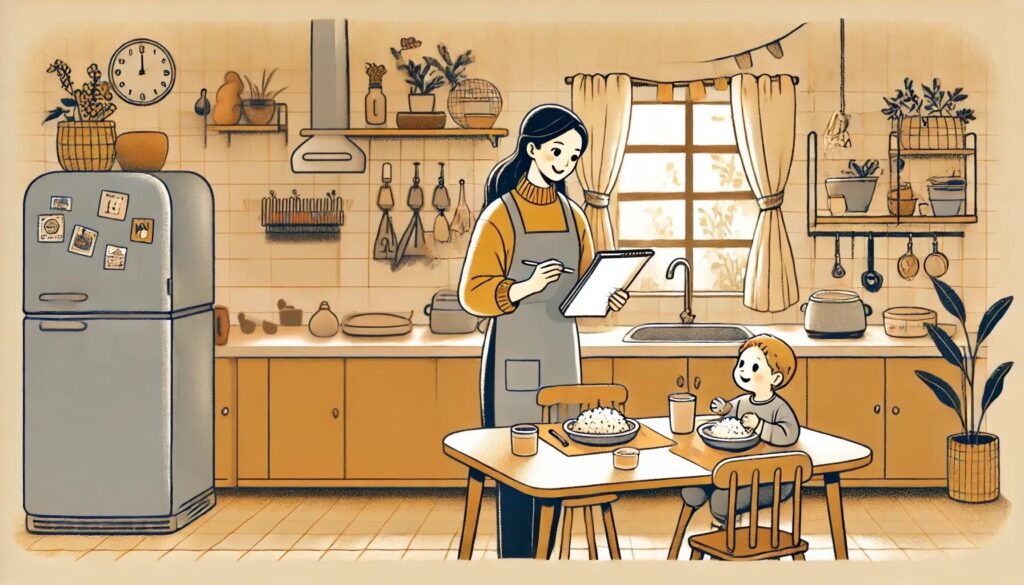1. Introduction
Have you ever wondered “My child won’t eat vegetables at home, but eats them at nursery school!?” or “I want to know what kinds of food they enjoy eating!” By effectively utilizing the nursery school communication notebook, you can understand your child’s eating patterns and use this information for meal planning at home! In this article, we’ll introduce ways to check your child’s food preferences using the communication notebook and create meals that are easy for children to eat.

2. Practical Points and Specific Examples
- “Points to Check in the Nursery School Communication Notebook”
The communication notebook contains lots of hints about your child’s eating habits!
- What ingredients did they eat? → Check if they’re eating vegetables they usually avoid at home
- Which cooking methods make food easier to eat? → Example: They’ll eat it in soup, or when finely chopped
- Portion sizes and eating speed → Do they eat better when taking their time, or are there dishes they eat enthusiastically
Tip: Focus on ingredients they eat at nursery but not at home, and experiment with cooking methods!
- “Recreating Nursery School Meals at Home”
Use the communication notebook to plan meals they’ll eat at home.
- Ingredients they eat at nursery but not at home
- Example: Green peppers → Ate them when finely chopped in fried rice
- Example: Carrots → Ate them in tender-cooked soup
- Match the seasoning and cooking methods
- Nursery school lunches basically use light seasoning and dashi-based flavoring
- Add sweetness and umami for a gentle taste
Tip: Adapt nursery school menu items to create familiar flavors!
- “Meal Planning Ideas Based on the Communication Notebook to Overcome Picky Eating”
Try incorporating ingredients your child eats at nursery school into your home cooking.
- For children who don’t like vegetables…
- Hearty miso soup or soup (vegetables naturally eaten when finely chopped)
- Mix vegetables into slightly sweet rolled omelettes
- For children who don’t like meat…
- Tender simmered chicken soboro bowl
- Meat sauce spaghetti with ground meat
- For children who don’t like fish…
- Salmon cooked in foil (made mild with butter and cheese)
- Fish soboro rice
Tip: Make food more appealing by combining nursery cooking methods with home preferences!
- “Exchange Information with Nursery School Teachers”
You can get more specific information by asking teachers questions through the communication notebook.
- Which cooking methods are popular?
- Which menu items did they eat a lot of?
- What techniques make food easier to eat?
Tip: Bridge the gap between home and nursery school meals for smoother eating habits!
3. Important Points and Helpful Tips
- “Don’t Force Them to Eat”
Just because they eat something at nursery doesn’t mean they’ll eat it at home. Start with just one bite!
- “Make a Habit of Planning Meals While Checking the Communication Notebook”
Plan your next menu while reviewing daily records of “What did they eat today?”
- “Combine with Foods They Like”
Challenging ingredients become easier to eat when mixed into favorite dishes.
4. Summary and Next Steps
Using the nursery school communication notebook helps you understand your child’s food preferences and improve meal planning at home! Let’s start with:
- Check what ingredients and cooking methods work at nursery school!
- Adapt recipes so you can recreate them at home!
- Learn tips from teachers to make food more appealing! Let’s take these steps! Make mealtimes enjoyable while gradually overcoming picky eating habits!




